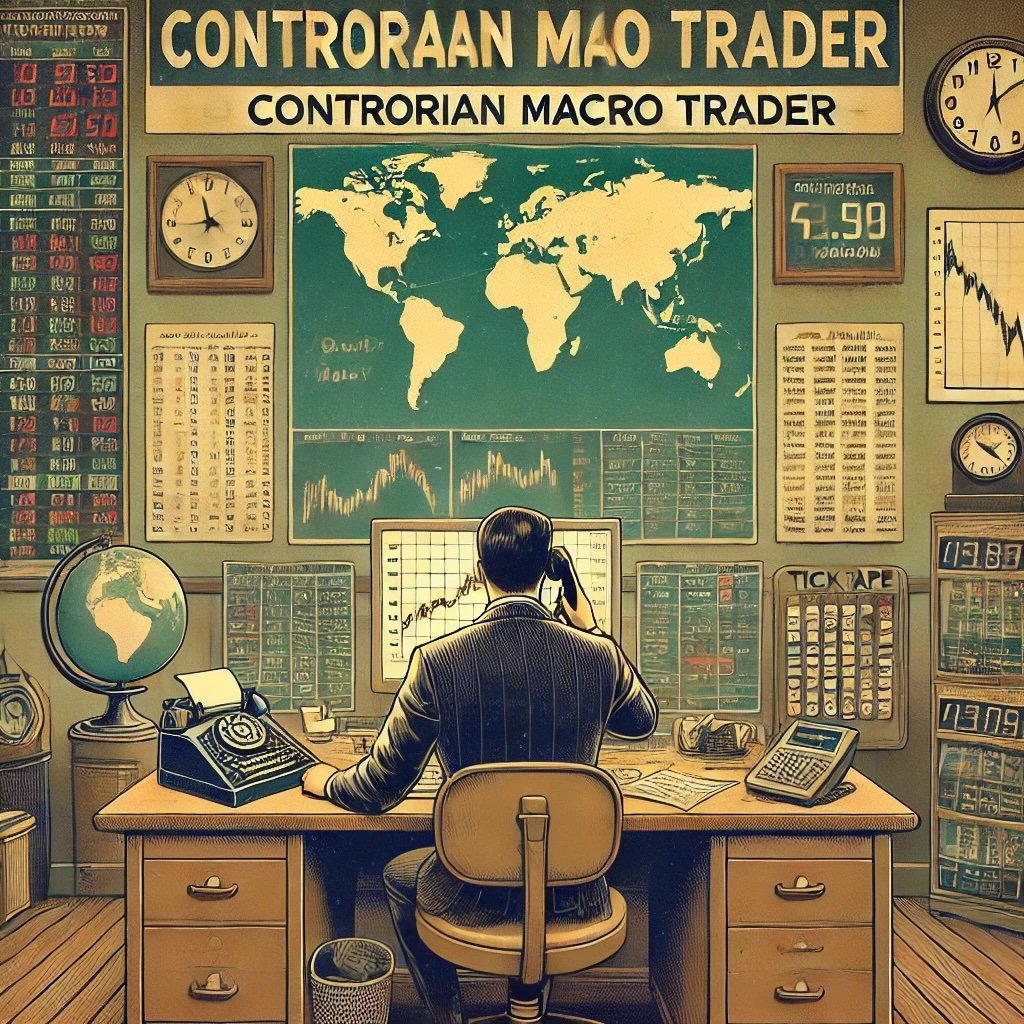Investing can often feel like navigating a maze, but learning from the masters can light the way. When it comes to legendary investors, Warren Buffett stands in a league of his own. Known as the “Oracle of Omaha,” Buffett has amassed a fortune through savvy investments and a deep understanding of the market. In this article, we’ll delve into his top 10 investment strategies and explore how you can apply them to your own financial journey.

Brief Overview of Warren Buffett
Warren Buffett is one of the most successful investors of all time. Born in 1930 in Omaha, Nebraska, he displayed an early aptitude for business and investing. Buffett is the chairman and CEO of Berkshire Hathaway, a multinational conglomerate holding company. Under his leadership, Berkshire Hathaway has grown from a struggling textile company into a powerhouse with a diverse range of holdings.
Despite his immense wealth, Buffett is known for his modest lifestyle and down-to-earth personality. He still lives in the same house he bought in 1958 and is often seen enjoying simple pleasures like a McDonald’s breakfast. His investment philosophy is grounded in value investing, focusing on long-term growth over short-term gains.
- Early Start: Buffett bought his first stock at the age of 11.
- Philanthropy: He has pledged to give away 99% of his wealth to charitable causes.
- Influence: His annual shareholder letters are must-reads for investors worldwide.
Tip: Understanding the person behind the strategies can provide valuable context and inspire your own investment journey.
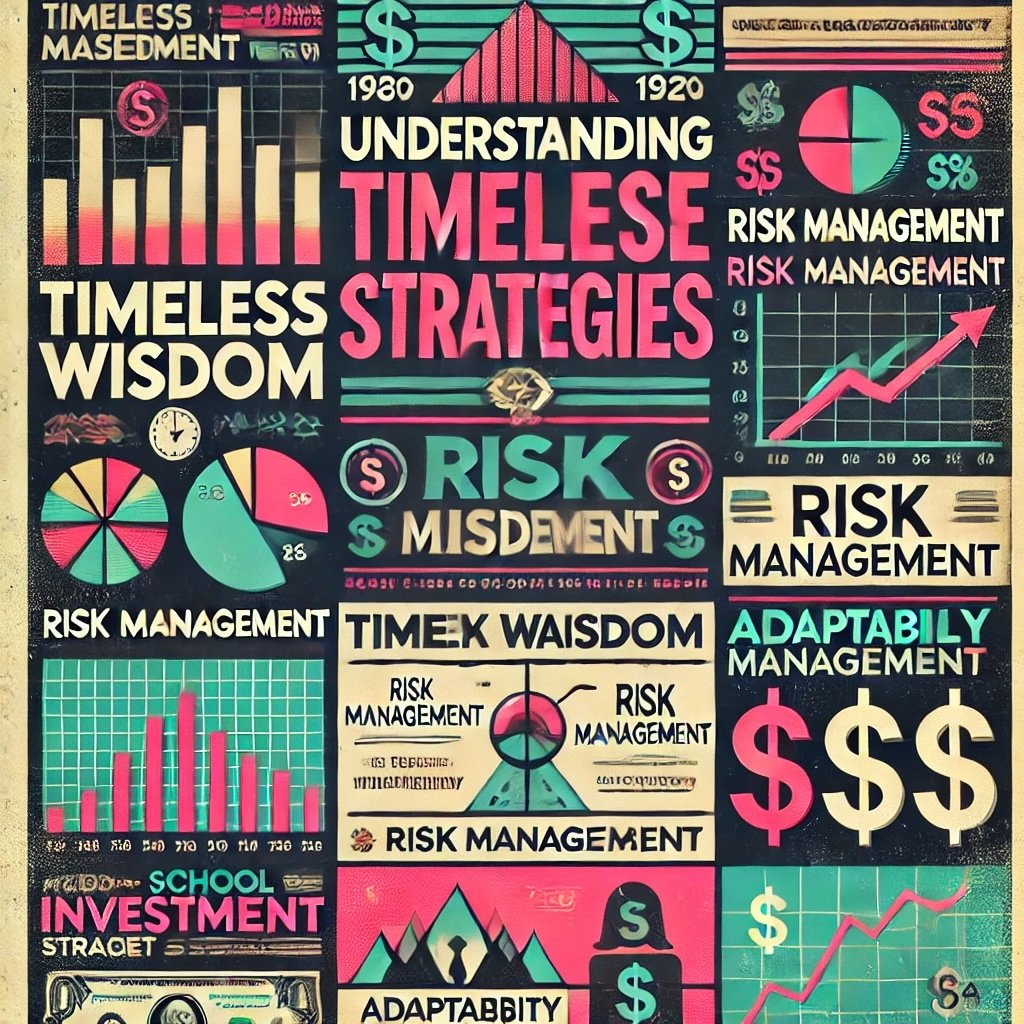
The Importance of Understanding His Strategies
Studying Buffett’s investment approaches isn’t just about mimicking his success; it’s about grasping timeless principles that can enhance your own investing. Buffett’s strategies have proven effective across various market conditions, from bull markets to economic downturns. By understanding his methods, you can make more informed decisions and potentially improve your investment outcomes.
His strategies emphasize patience, due diligence, and a focus on intrinsic value rather than market hype. This approach can help investors avoid common pitfalls like emotional trading and speculative bubbles. Learning from Buffett means adopting a mindset that prioritizes long-term wealth creation over quick wins.
- Timeless Wisdom: His principles remain relevant despite changing market dynamics.
- Risk Management: Emphasizes minimizing losses as much as maximizing gains.
- Adaptability: Strategies applicable to both novice and seasoned investors.
Tip: Applying tried-and-true investment strategies can help you navigate the market with greater confidence and less stress.
Buffett’s Investment Strategies
The goal of this article is simple yet profound: to reveal and explain Warren Buffett’s top 10 investment strategies. We’ll break down each strategy in an accessible way, offering insights into how Buffett thinks and operates. More importantly, we’ll discuss how you can apply these strategies to your own investing, regardless of your experience level.
By the end, you’ll have a clearer understanding of what makes Buffett’s approach successful and how these principles can fit into your financial plans. Whether you’re aiming to build a robust portfolio or just starting out, these strategies offer valuable guidance.
- Actionable Insights: Learn specific steps to implement each strategy.
- Real-Life Examples: Understand how Buffett applied these strategies in actual investments.
- Personal Application: Tips on tailoring the strategies to suit your individual goals.
Tip: As you read through each strategy, consider how it aligns with your financial objectives and risk tolerance.

The Foundation of Value Investing
Understanding Warren Buffett’s investment success starts with grasping the core principles of value investing. It’s not just a strategy; it’s a philosophy that has guided him throughout his illustrious career. In this section, we’ll explore what value investing is, how Buffett has adapted it, and why it’s crucial to his portfolio.
What is Value Investing?
Value investing is all about finding undervalued stocks that the market has overlooked. Investors seek companies trading below their intrinsic value, offering a margin of safety and potential for significant returns. This approach focuses on fundamental analysis, assessing a company’s financial health, earnings potential, and assets.
The roots of value investing trace back to the early 20th century, with Benjamin Graham often hailed as the “Father of Value Investing”. Graham’s seminal works, like “The Intelligent Investor”, laid the groundwork for this investment style. His teachings emphasized thorough analysis and a long-term perspective, avoiding speculative risks.
Buffett was a student of Benjamin Graham at Columbia University, where he absorbed these principles firsthand. He often credits Graham for instilling in him the importance of looking beyond market fluctuations and focusing on a company’s true worth. This historical context is vital to understand how Buffett’s strategies evolved from these foundational concepts.
- Intrinsic Value: The real, inherent worth of a company based on its assets and earnings.
- Margin of Safety: Buying securities at a price significantly below their intrinsic value to minimize risk.
- Fundamental Analysis: Evaluating a company’s financial statements to determine its health and prospects.
Tip: Start your investing journey by studying companies’ financials rather than relying solely on market trends or tips.
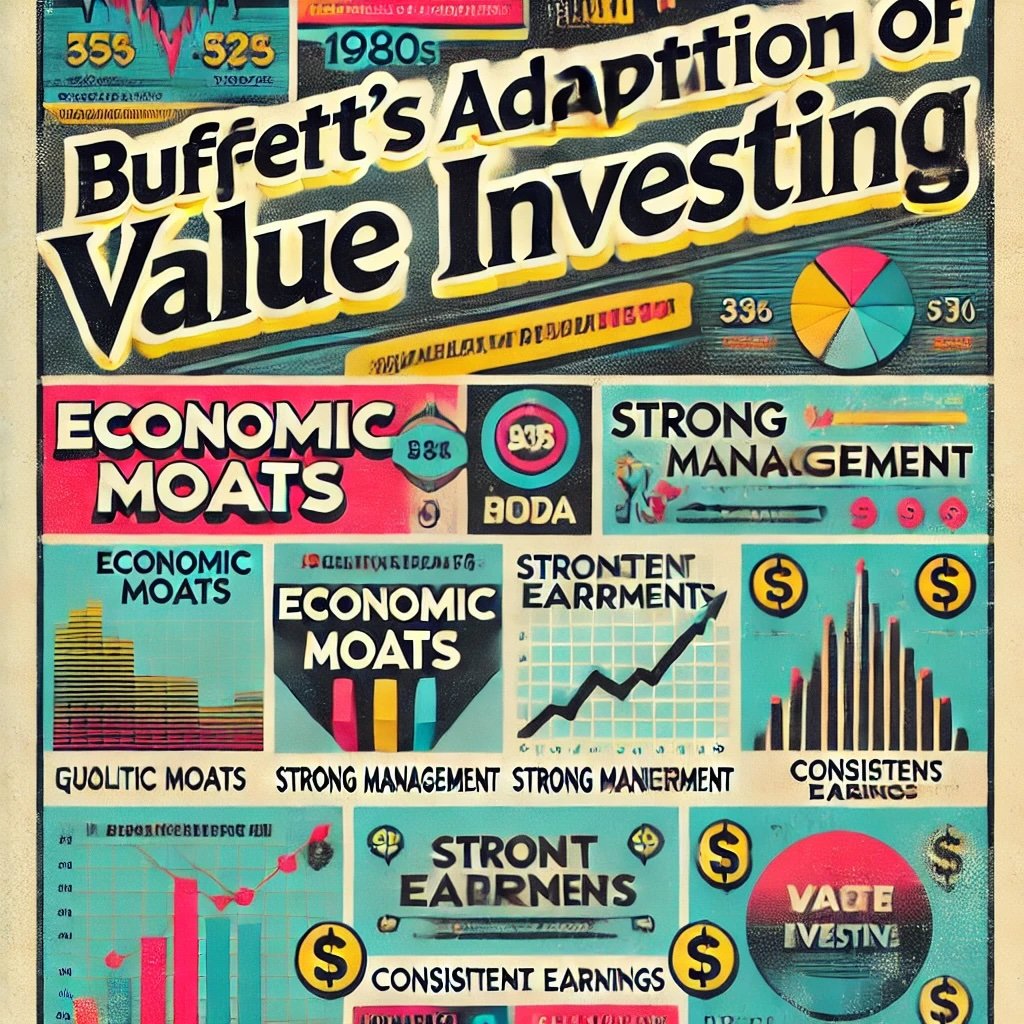
Buffett’s Adaptation of Value Investing
While Buffett began with Graham’s teachings, he evolved the concept of value investing to fit his own insights. Instead of just seeking undervalued companies, Buffett places a strong emphasis on the quality of the business. He looks for companies with durable competitive advantages, strong management, and consistent earnings.
Buffett’s approach shifts from buying mediocre businesses at rock-bottom prices to acquiring excellent companies at fair prices. He believes that it’s better to pay a reasonable price for a great company than a low price for a poor one. This adaptation allows him to invest in businesses that can grow over time, providing sustained returns.
Quality over quantity is a hallmark of Buffett’s strategy. He focuses on businesses he understands deeply, ensuring that his investments are not just undervalued but also have strong future prospects. This means he’s less concerned with short-term market fluctuations and more interested in long-term value creation.
- Economic Moats: Companies with sustainable competitive advantages that protect them from competitors.
- Strong Management: Leadership teams that are competent and shareholder-friendly.
- Consistent Earnings: Businesses that demonstrate reliable profitability over time.
Tip: When evaluating a stock, consider the company’s long-term potential and competitive position in its industry.
Importance in Buffett’s Portfolio
Value investing isn’t just a strategy for Buffett; it’s the foundation of his entire investment philosophy. This approach has played a pivotal role in his long-term success, allowing him to build a diversified portfolio that withstands market volatility. By focusing on intrinsic value and quality, Buffett has consistently identified opportunities that others might overlook.
Throughout his investment history, there are numerous examples where value investing principles led to significant gains. His investment in Coca-Cola in the late 1980s is a prime example. Despite skepticism from others, Buffett recognized the company’s strong brand and global reach, investing heavily when the stock was undervalued. This decision has yielded substantial returns over the decades.
Another notable investment is his stake in American Express during a time of crisis. Buffett saw the intrinsic value and long-term potential despite short-term setbacks, demonstrating his commitment to value investing principles. These examples underscore how this approach is deeply ingrained in his portfolio management.
- Long-Term Focus: Holding investments for extended periods to maximize returns.
- Resilience: Building a portfolio that can weather economic downturns.
- Consistent Strategy: Staying true to value investing principles regardless of market trends.
Tip: Emulate Buffett by maintaining a consistent investment strategy, even when the market sentiment shifts.
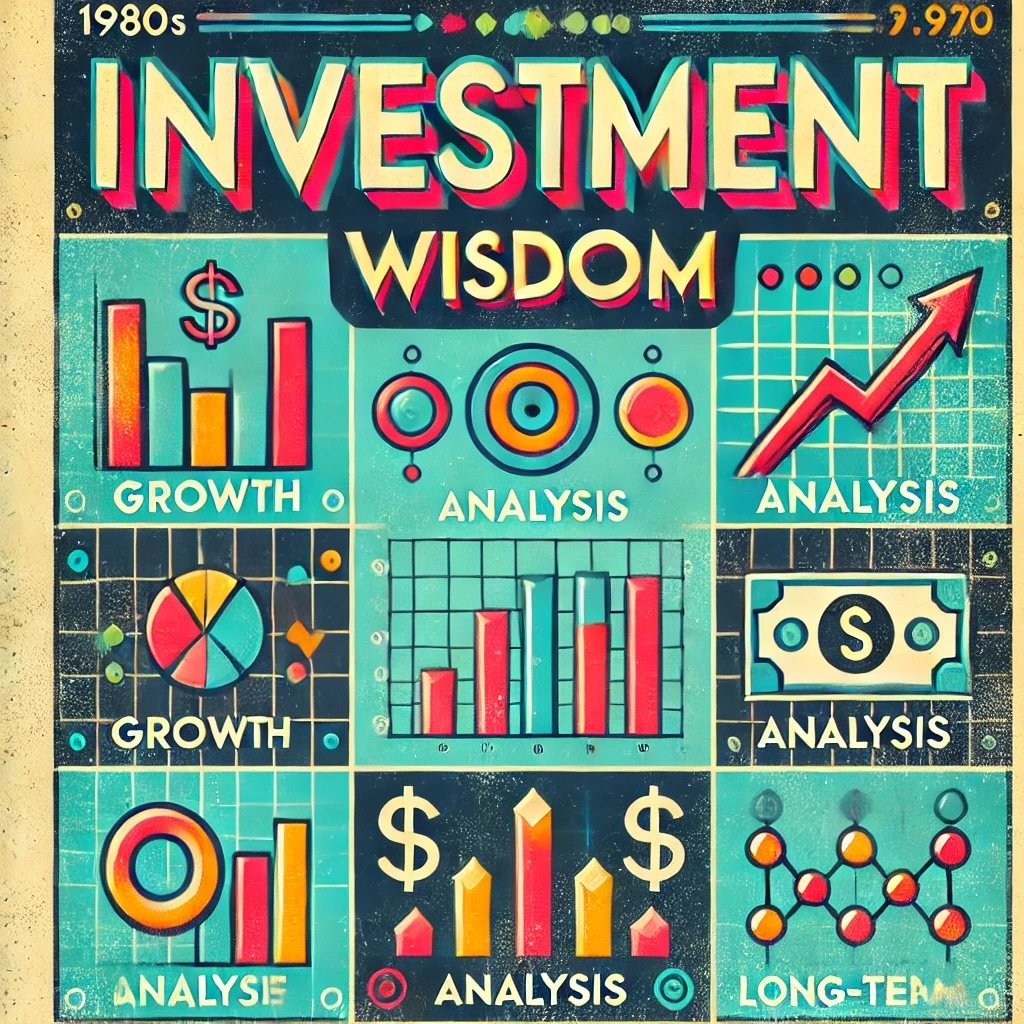
Warren Buffett’s Top 10 Investment Strategies
#1 Invest in What You Understand
One of Buffett’s cardinal rules is to invest in what you understand. He emphasizes focusing on industries and businesses within your circle of competence. By sticking to familiar sectors, you can make more informed decisions and better assess risks and rewards. Buffett avoids complex investments that are hard to evaluate, believing it’s wiser to pass on an opportunity than to invest blindly. This approach helps prevent costly mistakes that stem from ignorance.
- Simplicity over complexity: Investing in familiar businesses simplifies analysis.
- Informed decisions: Understanding the industry leads to better investment choices.
- Risk mitigation: Familiarity reduces the likelihood of unforeseen surprises.
Tip: Clearly define your circle of competence and resist the temptation to venture outside it for the sake of potential gains.

#2 Look for Durable Competitive Advantages (Moats)
Buffett seeks out companies with durable competitive advantages, often referred to as economic moats. These are businesses that possess strong, sustainable edges over their competitors. Factors like brand strength, patents, and cost advantages contribute to these moats. By investing in such companies, Buffett ensures that his investments can withstand competitive pressures over time. This strategy helps in identifying firms that are likely to deliver consistent returns in the long run.
- Brand loyalty: Strong brands can command premium pricing.
- Patented technology: Exclusive rights prevent competitors from copying innovations.
- Cost leadership: Ability to produce goods or services at lower costs than competitors.
Tip: When evaluating a company, look for unique advantages that are difficult for competitors to replicate.
#3 Prioritize Management Quality
Buffett places immense importance on the integrity and capability of company leadership. He believes that even a great business can falter under poor management. Evaluating the honesty, experience, and track record of executives is crucial. Buffett prefers shareholder-oriented management teams that make decisions benefiting long-term investors. Good leaders can navigate challenges effectively and capitalize on opportunities.
- Transparent communication: Honest leaders keep investors well-informed.
- Strategic vision: Capable management steers the company towards sustainable growth.
- Alignment of interests: Management with significant ownership stakes are likely to act in shareholders’ best interests.
Tip: Research the company’s leadership team thoroughly, including their past performance and reputation in the industry.
#4 Buy at a Margin of Safety
Purchasing stocks below their intrinsic value is a cornerstone of Buffett’s strategy. By buying at a margin of safety, he minimizes potential losses if the market doesn’t perform as expected. Calculating intrinsic value through fundamental analysis allows investors to identify undervalued stocks. This approach provides a cushion against errors in judgment or unforeseen market downturns.
- Value investing: Focuses on the true worth of a company, not just market price.
- Risk reduction: A buffer against market volatility.
- Long-term gains: Potential for significant appreciation when the market corrects undervaluations.
Tip: Always conduct a thorough fundamental analysis to determine a stock’s intrinsic value before investing.
#5 Long-Term Investment Horizon
Buffett advocates for a long-term investment horizon, often holding onto investments for decades. He believes that time allows the true value of a quality company to be realized. Holding investments for extended periods also benefits from compounding returns over time. This patience reduces the impact of short-term market fluctuations and transactional costs associated with frequent trading.
- Compounding interest: Earnings reinvested over time can grow exponentially.
- Reduced expenses: Fewer trades mean lower fees and taxes.
- Stability: Less influenced by daily market volatility.
Tip: Think like an owner, not a trader; focus on the long-term potential of your investments.
#6 Financial Discipline and Patience
Buffett’s success is partly due to his financial discipline and patience. He waits for the right opportunities rather than chasing every potential deal. By avoiding impulsive decisions based on market hype, he minimizes the risk of making poor investments. Buffett’s disciplined approach ensures that he only invests when conditions align with his strict criteria.
- Avoiding herd mentality: Steers clear of trends that lack substance.
- Strategic timing: Invests when the odds are most favorable.
- Emotion control: Makes decisions based on logic and analysis, not fear or greed.
Tip: Establish clear investment criteria and stick to them, even when the market becomes tumultuous.
#7 Reinvest Earnings
Buffett understands the power of reinvesting earnings to accelerate growth. By plowing profits back into investments, he leverages the compounding effect to increase returns exponentially. This strategy involves using dividends and profits to purchase more shares or invest in new opportunities. Over time, this can significantly boost the overall value of the investment portfolio.
- Growth amplification: Reinvested earnings generate additional returns.
- Wealth accumulation: Small gains can snowball into substantial wealth over time.
- Financial momentum: Continuously fuels investment growth without additional capital input.
Tip: Whenever possible, opt to reinvest dividends and earnings to harness the full power of compounding.
![]()
#8 Avoid Debt
Buffett prefers to avoid companies with high levels of debt. He believes that excessive leverage increases risk, especially during economic downturns. By investing in businesses with strong balance sheets and low debt, he reduces the likelihood of financial distress impacting his investments. Companies with minimal debt have more flexibility to navigate challenges and capitalize on opportunities.
- Financial stability: Lower debt equates to reduced bankruptcy risk.
- Operational flexibility: More resources available for growth initiatives.
- Resilience: Better positioned to withstand economic hardships.
Tip: Check a company’s debt-to-equity ratio to assess its financial health before investing.

#9 Be Fearful When Others Are Greedy and Greedy When Others Are Fearful
This famous adage reflects Buffett’s contrarian investing philosophy. He suggests being cautious when the market is overly optimistic and bold when others are panicking. By capitalizing on market overreactions, Buffett often finds valuable investments at discounted prices. This strategy requires emotional fortitude to go against the crowd.
- Opportunity in adversity: Market downturns can present buying opportunities.
- Avoiding bubbles: Steers clear of overpriced assets driven by hype.
- Value focus: Prioritizes fundamental value over market sentiment.
Tip: Develop the discipline to act independently of market emotions, focusing instead on solid analysis.
#10 Continuous Learning
Buffett is a strong advocate for continuous learning and staying informed. He dedicates a significant portion of his day to reading and expanding his knowledge. This commitment enables him to make well-informed investment decisions and adapt to changing market conditions. Reading extensively on various topics helps Buffett maintain a broad perspective.
- Informed investing: Better knowledge leads to smarter decisions.
- Adaptability: Staying updated allows for quick adjustment to new information.
- Intellectual growth: Continuous learning fosters innovation and strategic thinking.
Tip: Allocate time daily for reading and learning to enhance your investment expertise and stay ahead of market trends.
![]()
Case Studies of Successful Investments
Exploring Warren Buffett’s investment successes offers valuable insights into how his strategies are applied in real-world scenarios. Let’s delve into three of his most notable investments: Coca-Cola, Apple Inc., and American Express. Each case illustrates how Buffett’s principles guided his decisions and led to substantial returns.
Coca-Cola
Applying His Strategies to Invest in Coca-Cola
When Warren Buffett invested in Coca-Cola in 1988, he demonstrated several of his key investment strategies. He identified Coca-Cola as a company well within his circle of competence, understanding the beverage industry and the product itself intimately. Recognizing the company’s stock was undervalued following the 1987 market crash, he saw a clear margin of safety. Buffett admired the company’s strong management team, consistent earnings, and global presence—all aligning with his criteria for a sound investment. By patiently waiting for the right opportunity, he applied his financial discipline to acquire a significant stake at an attractive price.
- Circle of Competence: Investing in industries he thoroughly understands.
- Margin of Safety: Purchasing when the stock was undervalued.
- Strong Management: Trust in leadership to drive growth.
Tip: Invest in companies whose products or services you understand deeply to make more informed decisions.
The Role of Brand Strength and Global Reach
Coca-Cola’s durable competitive advantage played a crucial role in Buffett’s decision. The company’s brand strength was unparalleled, with a product recognized and consumed worldwide. Its extensive global reach ensured a diversified revenue stream, reducing reliance on any single market. Buffett recognized that Coca-Cola’s strong brand loyalty created a moat that competitors would struggle to penetrate. This enduring appeal meant consistent demand and profitability, aligning perfectly with his long-term investment horizon.
- Global Recognition: One of the most recognized brands globally.
- Brand Loyalty: Consumers repeatedly choose Coca-Cola over competitors.
- Distribution Network: An expansive network ensuring market penetration.
Tip: Companies with strong global brands often have a competitive edge that can lead to sustained success.
Apple Inc.
Evaluating Technology Companies Within Buffett’s Framework
Buffett’s investment in Apple Inc. marked a significant shift in his traditional approach. Historically cautious about technology stocks due to their rapid changes and complexities, he saw in Apple a company that fit within his investment framework. He evaluated Apple not just as a tech company but as a consumer electronics giant with a loyal customer base and strong brand—areas he understands well. Buffett appreciated Apple’s consistent earnings, robust ecosystem, and high-quality management under Tim Cook. By focusing on these factors, he applied his usual criteria to a new industry successfully.
- Consumer Focus: Viewing Apple as a maker of consumer products.
- Consistent Earnings: Noting Apple’s reliable profitability.
- Strong Leadership: Confidence in the management team’s capabilities.
Tip: Be open to re-evaluating industries as they evolve, especially when companies exhibit qualities that match your investment criteria.
Understanding the Shift in His Traditional Avoidance of Tech Stocks
Buffett’s move into Apple showcased his willingness to adapt and embrace change. Recognizing that some tech companies had developed durable competitive advantages, he adjusted his stance. Apple’s ecosystem creates high customer retention, fitting his preference for companies with economic moats. This shift didn’t abandon his principles but rather extended them into new territory. By doing so, Buffett demonstrated that continuous learning and flexibility are essential, even for seasoned investors.
- Economic Moat in Tech: Acknowledging sustainable advantages in the tech sector.
- Customer Loyalty: Apple’s ecosystem fosters repeat business.
- Adaptability: Willingness to update his investment approach.
Tip: Continuous learning can reveal new opportunities, so stay informed and adaptable in your investment strategies.

American Express
Identifying Opportunities During Market Distress
In the 1960s, American Express faced the infamous “Salad Oil Scandal,” which severely damaged its stock price. Buffett saw this crisis as an opportunity to invest in a fundamentally strong company temporarily undervalued by the market. He recognized that the core business remained solid despite the scandal. By applying his contrarian philosophy—to be greedy when others are fearful—he invested heavily in American Express. His patience and confidence in the company’s intrinsic value paid off handsomely as it recovered and thrived.
- Contrarian Investing: Buying when others were selling out of fear.
- Intrinsic Value Focus: Looking beyond temporary issues to the company’s real worth.
- Long-Term Vision: Holding onto the investment as the company rebounded.
Tip: Market downturns can present valuable investment opportunities if you focus on fundamentals rather than fear-driven selling.
The Significance of Consumer Trust and Brand Loyalty
Buffett understood that American Express’s strength lay in its brand reputation and customer trust. Despite the scandal, customers remained loyal due to the company’s history of reliability and prestige. This loyalty acted as a buffer against the crisis, allowing for a quicker recovery. The company’s ability to maintain consumer trust highlighted the importance of intangible assets in creating a durable competitive advantage. Buffett’s investment capitalized on this, reinforcing his strategy of prioritizing companies with strong customer relationships.
- Brand Reputation: A trusted name in financial services.
- Customer Loyalty: Clients continued to use services despite setbacks.
- Intangible Assets: Valuing elements beyond the balance sheet.
Tip: Assess a company’s intangible assets like brand and customer relationships—they can be key indicators of long-term success.
Lessons Learned
Common Themes Across These Investments
Across these investments, several common themes emerge that underscore Buffett’s strategies. He consistently seeks companies with strong brand identities, durable competitive advantages, and loyal customer bases. Buffett applies thorough fundamental analysis to identify intrinsic value and waits patiently for the right opportunities to buy at a margin of safety. His willingness to adapt, as seen with his investment in Apple, demonstrates the importance of continuous learning. Moreover, his focus on quality management ensures that the companies he invests in are led by capable and trustworthy teams.
- Durable Competitive Advantages: Essential for long-term profitability.
- Patient Capital: Willingness to wait for the right investment moment.
- Adaptability: Updating strategies in response to new information.
Tip: Identify and invest in companies that exhibit multiple strengths aligned with your investment philosophy for a robust portfolio.
Mistakes Avoided and Insights Gained
Buffett’s approach helps avoid common investment pitfalls such as following market hype or reacting emotionally to market fluctuations. By focusing on intrinsic value and long-term prospects, he sidesteps the dangers of speculative investing. His emphasis on understanding the business prevents investments in companies beyond his expertise, reducing risk. The insights gained from his strategies highlight the importance of discipline, patience, and thorough analysis. Investors can learn to prioritize quality over quantity, making informed decisions that align with their financial goals.
- Avoiding Hype: Steering clear of trendy but unsustainable investments.
- Risk Management: Minimizing exposure by understanding investments deeply.
- Strategic Patience: Waiting for opportunities that meet strict criteria.
Tip: Stick to your investment principles and avoid being swayed by market noise to achieve better long-term results.
![]()
Applying Buffett’s Strategies to Personal Investing
Assessing Personal Circle of Competence
Understanding your circle of competence is the first step toward successful investing. It’s all about recognizing the industries and businesses you genuinely understand. Think about your professional background, hobbies, and areas where you have more knowledge than the average person. By focusing on these areas, you can make more informed and confident investment decisions. Staying within your circle helps you avoid pitfalls associated with unfamiliar industries, reducing the risk of costly mistakes. Additionally, it enables you to better assess a company’s potential and competitive landscape.
- Identify your strengths: List industries you know well due to work or personal interests.
- Avoid complexity: Steer clear of sectors that seem confusing or overly complicated.
- Enhance decision-making: Leverage your expertise to assess companies more accurately.
Tip: Regularly reassess and expand your circle of competence through learning and experience, but always acknowledge its limits.
Conducting Fundamental Analysis
Evaluating a company’s intrinsic value is essential for making sound investment choices. Fundamental analysis involves examining financial statements, understanding business models, and assessing market conditions. Start by looking at key financial metrics like earnings, revenue growth, and debt levels. Use tools like annual reports, financial news outlets, and investment platforms to gather data. By doing so, you can determine whether a stock is undervalued or overvalued, aligning your investments with Buffett’s value-oriented approach. This thorough analysis helps you make decisions based on facts rather than speculation.
- Study financial statements: Analyze balance sheets, income statements, and cash flow statements.
- Use available tools: Utilize resources like Yahoo Finance, Morningstar, or company investor relations pages.
- Compare industry benchmarks: See how the company stacks up against its competitors.
Tip: Take time to understand the company’s business model and competitive landscape for a more comprehensive analysis.
![]()
Building a Long-Term Portfolio
When constructing your portfolio, think long-term. Select stocks with the intention of holding them for years, if not decades. Look for companies with strong fundamentals, durable competitive advantages, and solid management teams. While diversification is important, Buffett suggests focusing on quality over quantity. By investing in a select number of well-understood companies, you can manage your portfolio more effectively and potentially achieve better returns. Remember, it’s about building wealth steadily over time, not chasing quick profits.
- Focus on quality: Prioritize companies with proven track records.
- Diversify wisely: Spread investments across different industries within your circle of competence.
- Monitor but don’t micromanage: Keep an eye on your investments without overreacting to short-term market fluctuations.
Tip: Reinvest dividends and earnings to capitalize on the power of compounding over time.
Cultivating Patience and Discipline
Patience and discipline are key virtues in investing. Resist the urge to react impulsively to market news or trends. Establish clear investment goals and stick to them, even when the market becomes volatile. Remember that investing is a marathon, not a sprint. By maintaining a disciplined approach, you can avoid emotional trading that often leads to poor decisions and losses. Staying the course during turbulent times often separates successful investors from the rest.
- Set clear goals: Define what you want to achieve with your investments.
- Avoid emotional decisions: Base your actions on analysis, not fear or greed.
- Stay the course: Trust your strategy, especially during market downturns.
Tip: Regularly review your investment plan to stay focused and make adjustments as needed, but avoid knee-jerk reactions.
Continuous Education and Improvement
Investing is a journey of continuous learning. Stay informed by reading books, articles, and market analyses. Consider classic investment texts like “The Intelligent Investor” by Benjamin Graham or “Common Stocks and Uncommon Profits” by Philip Fisher. Joining investment communities and forums can also provide valuable insights and keep you updated on market trends. By continually expanding your knowledge, you enhance your ability to make well-informed decisions. Education empowers you to adapt to changing market conditions and refine your investment strategy.
- Read extensively: Dedicate time to reading financial news and investment literature.
- Engage with others: Participate in investment clubs or online forums like Seeking Alpha or Reddit’s r/investing.
- Attend seminars and webinars: Take advantage of educational events to learn from experts.
Tip: Make learning a daily habit, even if it’s just reading an article or a chapter each day.
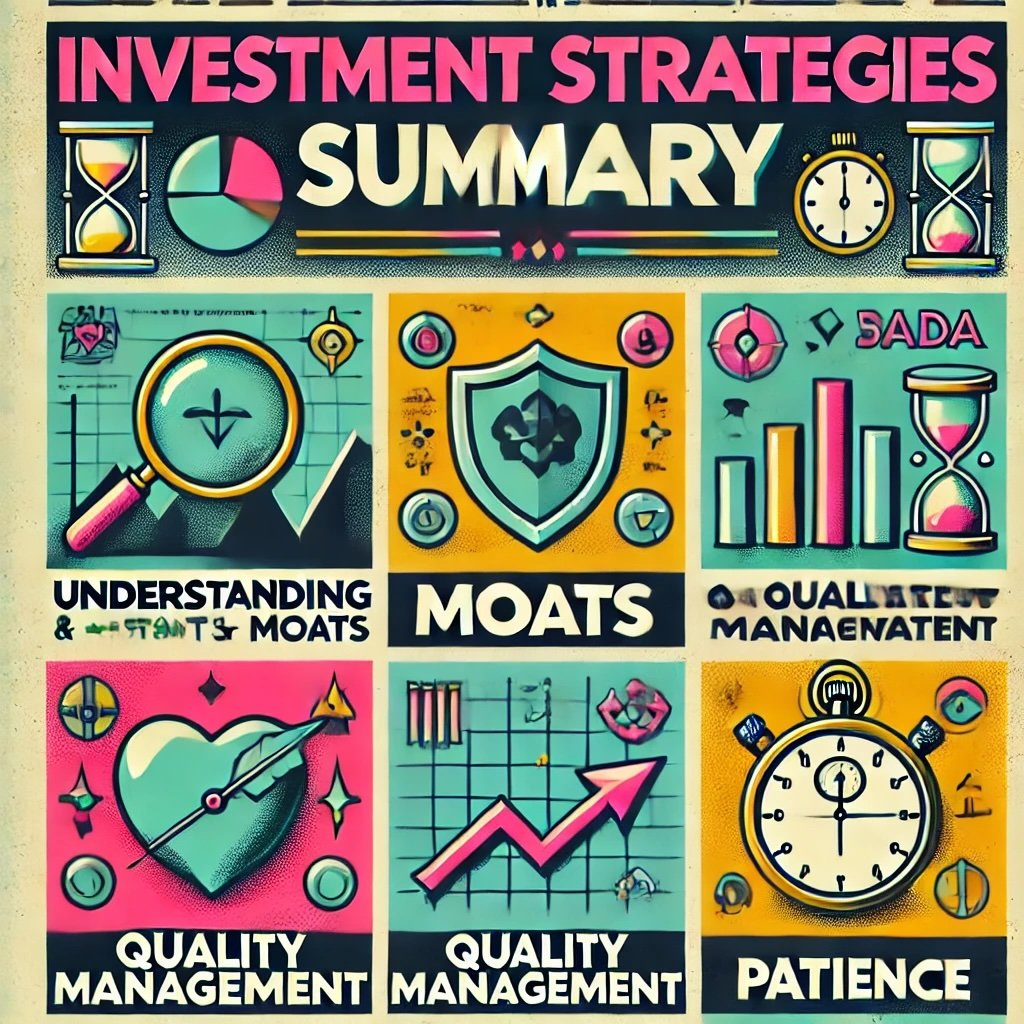
Recap of Buffett’s Key Strategies
As we wrap up our deep dive into Warren Buffett’s top 10 investment strategies, it’s helpful to revisit the key takeaways. These principles aren’t standalone tips; they’re interconnected pieces of a cohesive investment philosophy. From investing in what you understand to continuous learning, each strategy reinforces and complements the others. Together, they form a robust framework for making sound investment decisions.
Let’s briefly summarize these strategies:
- Invest in What You Understand: Focus on industries and businesses within your circle of competence.
- Look for Durable Competitive Advantages (Moats): Seek companies with strong, sustainable edges over competitors.
- Prioritize Management Quality: Evaluate the integrity and capability of company leadership.
- Buy at a Margin of Safety: Purchase stocks below their intrinsic value to minimize risk.
- Long-Term Investment Horizon: Hold investments for extended periods to realize full value.
- Financial Discipline and Patience: Wait for the right opportunities rather than frequent trading.
- Reinvest Earnings: Plow profits back into investments to accelerate growth.
- Avoid Debt: Steer clear of companies with high leverage.
- Be Fearful When Others Are Greedy and Greedy When Others Are Fearful: Capitalize on market overreactions.
- Continuous Learning: Commit to ongoing education and staying informed.
Tip: Think of these strategies as parts of a whole—when combined, they enhance your ability to invest wisely and successfully.
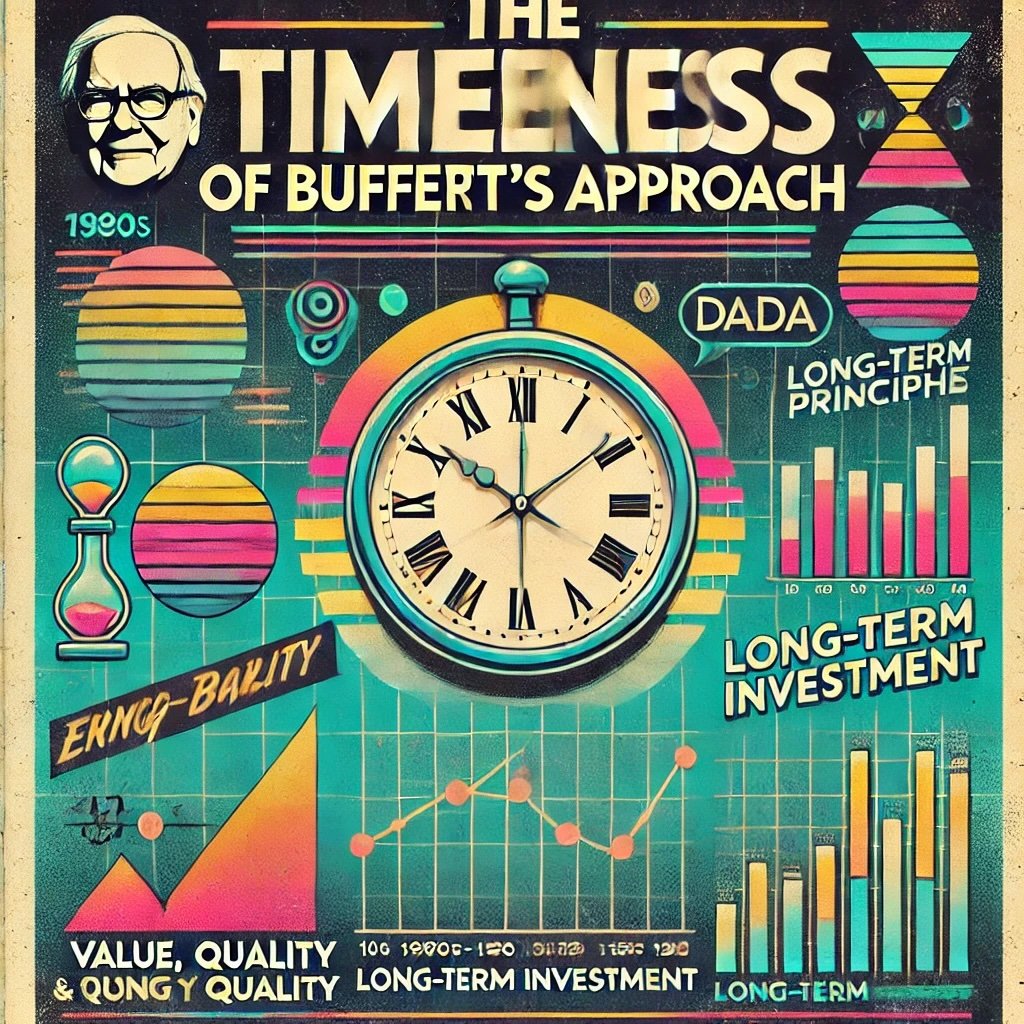
Warren Buffett’s Top 10 Investment Strategies — 12 Practical FAQs
What does “circle of competence” actually mean, and how do I define mine?
Your circle of competence is the set of businesses and industries you genuinely understand—how they make money, what drives costs, and why customers choose them. Define it by listing sectors you work in, buy from often, or study deeply, then write a one-paragraph “how it works” summary for each. If you can’t explain the revenue engine, unit economics, and top competitors in plain language, it’s outside your circle (for now).
How do I estimate intrinsic value the Buffett way?
Buffett focuses on the present value of future cash flows. A practical shortcut for most investors is: (1) forecast conservative free cash flows, (2) apply a reasonable growth period that fades to a steady rate, and (3) discount at a rate reflecting risk (often your required return). Cross-check with multiples (e.g., EV/FCF vs. peers and history). Intrinsic value is a range, not a point—act only when price is well below the low end of your range.
What is a “margin of safety,” and how big should it be?
It’s the gap between your estimate of intrinsic value and today’s market price—your buffer against mistakes and surprises. For stable, high-quality firms, many investors target ~20–30%. For cyclical or harder-to-forecast businesses, demand more. If the margin disappears after a price run-up, be patient rather than stretching your assumptions.
How do I identify an economic moat in practice?
Look for durable advantages that competitors can’t easily copy: iconic brands (pricing power), cost advantages (scale, process), network effects (platforms that improve as users join), switching costs (pain to leave), and regulatory/asset barriers (licenses, rights-of-way). Evidence shows up in high and persistent ROIC, stable or rising gross margins, and pricing that holds up in downturns.
How does Buffett evaluate management quality?
He prizes integrity, rational capital allocation, and candor. Signals include: consistent, shareholder-friendly use of cash (dividends/buybacks only when sensible), plain-English letters, realistic guidance, and willingness to admit mistakes. Watch for empire building, serial expensive acquisitions, or stock-option dilution that outpaces value creation.
What is a Buffett-style “long-term horizon” in years?
Think in business lifecycles, not quarters. If the moat endures and reinvestment opportunities remain, holding 5–10+ years is normal. Review annually like an owner: has the moat strengthened, management allocated well, and the thesis stayed intact? If yes, let compounding do the heavy lifting.
How should I reinvest earnings and dividends?
If your best idea is the business you already own (and valuation remains reasonable), drip dividends back into it. Otherwise, direct cash to the highest risk-adjusted opportunity inside your circle. Reinvesting is a flywheel: small, steady additions over many years often beat sporadic big bets.
What level of debt is “too much” for Buffett-style investing?
Favor balance-sheet resilience. As rough guides, prefer net cash or modest net debt, interest coverage comfortably >5× through the cycle, and maturities well-laddered. For utilities/REITs (where debt is normal), focus on fixed-rate mix, payout safety, and regulatory/re-lease risk. Avoid businesses that need perfect conditions to service debt.
How do I apply “be fearful when others are greedy” without trying to time the market?
Use checklists and prewritten rules. When euphoria is high (valuations stretched, speculative behavior rampant), raise your quality and margin-of-safety bars. In fearful markets, work your prepared buy list: accumulate great businesses at rational prices in tranches. You’re not timing; you’re improving expected outcomes with discipline.
Does Buffett ever invest in tech—and should I?
Yes, when it behaves like a durable consumer platform (e.g., ecosystem lock-in, services annuities, sticky hardware/software). The principle: tech is fine if it sits inside your circle and shows moats you can underwrite (switching costs, network effects, brand). If the edge relies on being “first” or perpetually out-innovating, demand a bigger margin of safety.
What are the most common mistakes Buffett’s approach helps me avoid?
Chasing hot stories, over-trading, paying any price for growth, ignoring balance sheets, and abandoning a sound thesis due to headline noise. A value-and-quality framework forces you to ask, “What is this worth, what protects it, and what could break it?”—before you click “buy.”
How do I start applying all 10 strategies this month?
Draft your circle of competence list.
Build a 1-page thesis template (moat, management, cash flows, risks).
Screen for high ROIC, clean balance sheets, and stable margins.
Estimate conservative intrinsic value ranges.
Create a buy list with required margins of safety.
Accumulate slowly, review annually, and keep learning daily.
The Timelessness of Buffett’s Approach
One of the remarkable aspects of Buffett’s investment philosophy is its timelessness. Despite the ever-changing landscape of the financial markets, these strategies remain relevant and effective. Markets may fluctuate, technologies evolve, and industries transform, but the fundamental principles of value investing endure. Buffett’s emphasis on intrinsic value, quality management, and long-term horizons transcends market cycles and economic shifts.
Moreover, his strategies are adaptable to various market conditions. Whether in bull markets or bear markets, the core tenets provide a steady compass. By focusing on the underlying value and fundamentals of businesses, investors can navigate uncertainties with greater confidence. Buffett’s approach teaches us that while tactics may change, solid principles stand the test of time.
- Universal Principles: Applicable across different industries and economic environments.
- Resilience: Strategies that withstand market volatility and economic downturns.
- Adaptability: Flexibility to adjust tactics while staying true to core principles.
Tip: Ground your investment approach in timeless principles to build a resilient portfolio that can weather market changes.
Encouragement for Investors
Embarking on your investment journey with a value-oriented mindset can be both rewarding and empowering. Buffett’s strategies offer a roadmap for achieving financial success through discipline, patience, and informed decision-making. By adopting these principles, you’re not just chasing profits; you’re building a solid foundation for long-term wealth creation.
Remember, investing isn’t about getting rich overnight. It’s about making thoughtful choices, learning continuously, and staying committed to your goals. You have the potential to succeed by applying these strategies in a way that suits your unique circumstances. Let Buffett’s wisdom inspire you to approach investing with confidence and a steady hand.
- Stay Disciplined: Stick to your investment plan, even when faced with market noise.
- Be Patient: Allow your investments the time they need to grow.
- Keep Learning: Never stop seeking knowledge to enhance your investment acumen.
Tip: Believe in your ability to make wise investment decisions—consistent effort and adherence to sound principles can lead to success.
Important Information
Comprehensive Investment Disclaimer:
All content provided on this website (including but not limited to portfolio ideas, fund analyses, investment strategies, commentary on market conditions, and discussions regarding leverage) is strictly for educational, informational, and illustrative purposes only. The information does not constitute financial, investment, tax, accounting, or legal advice. Opinions, strategies, and ideas presented herein represent personal perspectives, are based on independent research and publicly available information, and do not necessarily reflect the views or official positions of any third-party organizations, institutions, or affiliates.
Investing in financial markets inherently carries substantial risks, including but not limited to market volatility, economic uncertainties, geopolitical developments, and liquidity risks. You must be fully aware that there is always the potential for partial or total loss of your principal investment. Additionally, the use of leverage or leveraged financial products significantly increases risk exposure by amplifying both potential gains and potential losses, and thus is not appropriate or advisable for all investors. Using leverage may result in losing more than your initial invested capital, incurring margin calls, experiencing substantial interest costs, or suffering severe financial distress.
Past performance indicators, including historical data, backtesting results, and hypothetical scenarios, should never be viewed as guarantees or reliable predictions of future performance. Any examples provided are purely hypothetical and intended only for illustration purposes. Performance benchmarks, such as market indexes mentioned on this site, are theoretical and are not directly investable. While diligent efforts are made to provide accurate and current information, “Picture Perfect Portfolios” does not warrant, represent, or guarantee the accuracy, completeness, or timeliness of any information provided. Errors, inaccuracies, or outdated information may exist.
Users of this website are strongly encouraged to independently verify all information, conduct comprehensive research and due diligence, and engage with qualified financial, investment, tax, or legal professionals before making any investment or financial decisions. The responsibility for making informed investment decisions rests entirely with the individual. “Picture Perfect Portfolios” explicitly disclaims all liability for any direct, indirect, incidental, special, consequential, or other losses or damages incurred, financial or otherwise, arising out of reliance upon, or use of, any content or information presented on this website.
By accessing, reading, and utilizing the content on this website, you expressly acknowledge, understand, accept, and agree to abide by these terms and conditions. Please consult the full and detailed disclaimer available elsewhere on this website for further clarification and additional important disclosures. Read the complete disclaimer here.


